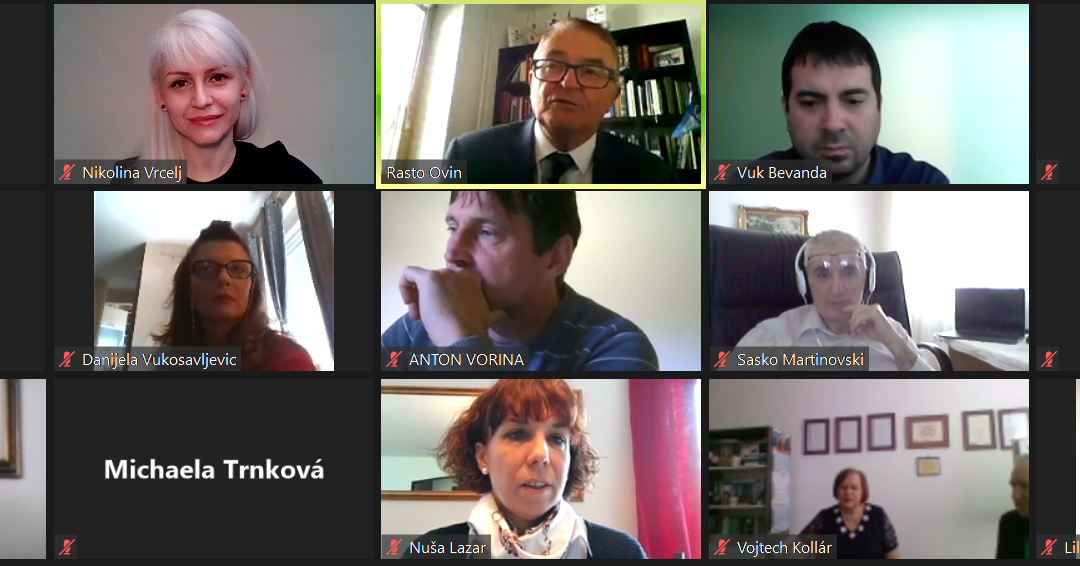Evaluating Environmentally Sustainable Production Practices in Rural Areas
Filip Šneler – University of Rijeka, Faculty of Economics, Croatia
Gordana Brcković – University of Rijeka, Faculty of Economics, Croatia
Trina Mjeda – University North, Croatia
Keywords:
Production;
Forests;
Rural area;
Sustainable management;
Ecology
Abstract: Forests and forestry are the ecological and economic infrastructure of every state. The EU strategy for the forest-based sector is particularly related to rural development, since, in such areas, forests are mostly spread, thus representing an opportunity for more balanced development, or in other words – survival of rural areas. Croatia is no exemption. The goal of forest management in the Republic of Croatia is the sustainable and harmonious use of all forest functions and the permanent improvement of their condition, by promoting environmentally sustainable production practices in such a way that the local or rural environment has financial benefits. Looking at forests as perfect factories, ranging from the production of wood pulp as raw materials, oxygen and food, water purifiers, carbon tanks and all the way to the intangible and generally useful functions of forests, it is necessary to observe their all-encompassing importance. We are facing global climate change, which significantly influences the restoration and erection of new forest stands, that is one of the most important procedures for sustainable forest management in Croatia. Current techniques and knowledge that are being applied contribute to discouraging results, therefore it is crucial to introduce and promote new environmentally friendly practices, aiming to increase the productive function of forest land and forest as an ecosystem. In accordance with the sustainable development of forest land, research was conducted in the lowland part of Sisak-Moslavina County in Croatia. The aim of the research is to study the cost-effectiveness and compare the adaptation of new methods and practices of reforestation, with the end result of the forested area as a production unit, and that was conducted working on two land sections. On the surface of the first section, which was previously chemically prepared, a classic renovation was performed by sowing acorns employing a spreader. The acorn was collected by the local population. Processing of the second section included planting seedlings, while the section was previously mechanically prepared by grinding biomass and an integral method of soil preparation in rows with a spacing of 3 m. The internal planting distance between the plants was 0.80 – 1.0 m, and work was carried out with the help of external contractors, the local population. The use of new environmentally sustainable technologies has resulted in 29% higher financial costs of forestation. However, using new practices compared to the classical ones, the financial viability in terms of economic profit of the rural area was determined. The application of new silvicultural practices is initially more expensive, but results in a shorter period of time to achieve targeted results, while the increase in costs refers to the involvement of the local community that participated in the works.


7th International Scientific ERAZ Conference – ERAZ 2021 – Conference Proceedings: KNOWLEDGE BASED SUSTAINABLE DEVELOPMENT, Online/virtual, May 27, 2021
ERAZ Conference Proceedings published by: Association of Economists and Managers of the Balkans – Belgrade, Serbia
ERAZ conference partners: Faculty of Economics and Business, Mediterranean University, Montenegro; University of National and World Economy – Sofia, Bulgaria; Faculty of Commercial and Business Studies – Celje, Slovenia; AMBIS University, Prague – Czech Republic; Faculty of Applied Management, Economics and Finance – Belgrade, Serbia
ERAZ Conference 2021 Conference Proceedings: ISBN 978-86-80194-46-2, ISSN 2683-5568, DOI: https://doi.org/10.31410/ERAZ.2021
Creative Commons Non Commercial CC BY-NC: This article is distributed under the terms of the Creative Commons Attribution-Non-Commercial 4.0 License (https://creativecommons.org/licenses/by-nc/4.0/) which permits non-commercial use, reproduction and distribution of the work without further permission.
References
Benko M., (2020). ‘’Sustavna praćenja konverzije sadnicama hrasta lužnjaka (Quercus robur L.) i kitnjaka (Quercus petraea L.) s obzirom na različit način sadnje’’, Šumarski list, No. 9-10(2020): pp 485-496
Bolte A., (2019). ‘’Forest Adaptation and Restoration under Global Change’’, https://www.iufro. org/science/task-forces/forest-adaptation-restoration/
Đodan M., (2019). ‘’Novi izazovi u gospodarenju hrvatskim šumama’’ Hrvatske šume, No 270, pp:10-12
Dubravac, T., V. Krejči (2001). ‘’Pojavnost mladog naraštaja u sačuvanim panjačama hrasta crnike (Quercus ilex L.) – uvjet osiguranja budućih sjemenjača’’, Znanstvena knjiga: Znanost u potrajnom gospodarenju hrvatskim šumama, Šumarski fakultet Sveučilišta u Zagrebu, Šumarski institut Jastrebarsko, Hrvatske šume d.o.o. pp: 43-52, Zagreb
García, C., Espelta, J.M. and Hampe, A. (2020), Managing forest regeneration and expansion at a time of unprecedented global change. J Appl. Ecol., 57: 2310-2315. https://doi. org/10.1111/1365-2664.13797
Griscom B.W., Adams J., Ellis P.W., Houghton R. A., Lomax G., Miteva D., Schlesinger W.A., Shoch D., Siikamäki J.V., Smith P., Woodbury P., Zganjar C., Blackman A., Campari J., et al. (2017). ‘’ Natural climate solutions’’, The Nature Conservancy, Arlington, VA 22203; Department of Biology, James Madison University, Harrisonburg, VA 22807; PNAS October 31, 2017 114 (44) 11645-11650; first published October 16, 2017; https://doi.org/10.1073/ pnas.1710465114
Hanewinkel, M., Cullmann, D. A., Schelhaas, M. J., Nabuurs, G. J., & Zimmermann, N. E. (2013). ‘’Climate change may cause severe loss in the economic value of European forest land’’, Nature Climate Change, No. 3(3), pp 203-207, https://doi.org/10.1038/nclimate1687
Mataga Ž., Zupančić M., (2003). ‘’Projekt organizacije za ruralni razvoj’’ (Prijedlog), Institut za društvena istraživanja Sveučilišta u Zagrebu, Zagreb Posavec, S., M. Šporčić, D. Antonić, K. Beljan, (2011). ‘’Poticanje inovacija – ključ razvoja u hrvatskom šumarstvu’’, Šumarski list, No. 5-6, pp 243
Posavec,S., 2020.‘’Održive šume za održivu budućnost’’ Hrvatske šume , No 277-278, pp:11-12
Vuletić, D., S. Krajter, O. Vlainić, (2011). ‘’Pregled stavova lokalnog stanovništva i korisnika o nedrvnim proizvodima i uslugama šuma’’, Šumarski list, No 135(13), pp 222–22.

